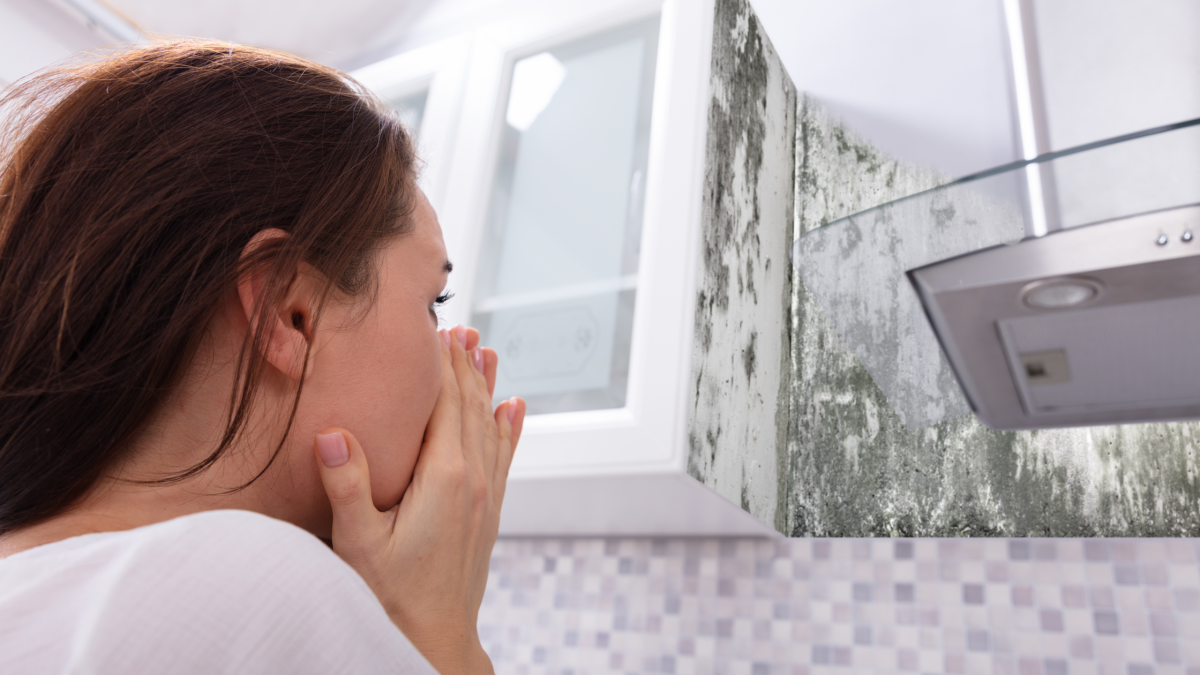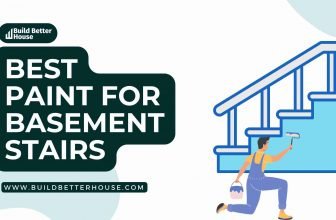Types of Mold: A Comprehensive Guide for Identification

Mold is a common household issue that can grow in damp and humid conditions, often leading to potential health problems and unpleasant odors. Various types of mold can be found both indoors and outdoors, with some molds being more harmful than others. It is crucial to identify the type of mold present in your home and take appropriate measures to protect your living environment.
There are several common types of molds found in homes, including allergenic, pathogenic, and toxic molds. Some of the most prevalent indoor mold species are Cladosporium, Penicillium, and Aspergillus. These molds can grow on a range of surfaces, including walls, ceilings, and furniture made from organic materials. Understanding the factors that contribute to mold growth will help you prevent and control its proliferation in your living space.
Mold’s health effects range from minor to severe, including allergies, respiratory issues, and exposure to toxic mycotoxins. It is essential to recognize the signs of mold growth and take appropriate remediation steps if you suspect a mold problem in your home. By staying informed about mold’s dangers and proper prevention techniques, you can protect yourself and your loved ones from this common, yet potentially harmful, household issue.

Key Takeaways
- Mold grows in damp environments and can have varying health effects.
- Common indoor mold species include Cladosporium, Penicillium, and Aspergillus.
- Identifying and addressing mold problems promptly is crucial for maintaining a healthy home.
Common Types of Mold
Mold is a naturally occurring organism that plays a significant role in breaking down organic materials. However, some types of mold can have negative effects on your health and indoor air quality. In this section, we will discuss the three common types of mold: allergenic, pathogenic, and toxigenic molds.
Allergenic Molds
Allergenic molds are the most common type of molds you may encounter in your home. Some of the most common allergenic molds include:
- Aspergillus: Often found on damp walls, insulation, and air conditioning systems.
- Penicillium: Commonly encountered on decaying fabrics, wallpaper, and carpets.
- Alternaria: Frequently discovered in the grout of bathrooms and damp window sills.
- Cladosporium: Typically identified on textiles, wood surfaces, and damp indoor spaces.
These molds can cause allergic reactions, such as sneezing, runny nose, and itchy eyes, particularly in individuals with mold allergies.
Pathogenic Molds
Pathogenic molds can cause infections, especially in people with weakened immune systems. Some of these molds are:
- Aureobasidium: Often found on wooden surfaces, wallpaper, and painted surfaces.
- Mucor: Commonly discovered in damp areas like basements and near air conditioning units.
- Ulocladium: Usually located in wet building materials and damp indoor spaces.
If you suspect the presence of pathogenic molds in your home, it’s essential to get rid of them to minimize health risks.
Toxigenic Molds
Toxigenic molds produce toxic compounds called mycotoxins, which can adversely impact your health. The most notorious toxigenic mold is Stachybotrys, also known as “black mold.” It produces harmful substances that can lead to severe health problems. Other toxigenic molds include:
- Chaetomium: Generally found on water-damaged building materials such as drywall and insulation.
- Fusarium: Commonly grows on water-damaged carpets and fabrics.
- Acremonium: Usually discovered in humidifiers, window sealants, and cooling coils.
- Geotrichum: Can be found on decaying food and damp surfaces.
Exposure to toxigenic molds can lead to temporary irritation or even long-term illness, depending on the individual.
To protect yourself and your family, it’s crucial to identify and remediate any mold infestations in your home as soon as possible.
Mold Growth Factors
Understanding the factors that contribute to mold growth can help you prevent its occurrence in your home or office. Mold thrives in specific conditions, and by being aware of these conditions, you can manage your environment to minimize mold development.
Mold requires moisture, humidity, a suitable temperature, and organic matter as a food source to grow. The presence of water, such as leaks or flooding, can significantly increase the risk of mold growth in damp areas.
Moisture and humidity levels play a critical role in mold growth. Mold thrives in environments with relative humidity levels above 60%. To limit mold growth in your home, maintain indoor humidity levels between 30% and 50%. Common sources of moisture include condensation, leaking pipes, and poor ventilation, so identifying and addressing these issues promptly is essential.
Temperature is another factor that affects mold growth. Most indoor molds, such as Cladosporium, Penicillium, and Aspergillus, can grow in a wide range of temperatures; however, they tend to proliferate more rapidly in warmer environments. To minimize mold growth, try to keep indoor temperatures below 77°F (25°C) and ensure proper airflow throughout your living spaces.
Mold requires organic matter to use as a food source. Organic materials like wood, paper, carpeting, and insulation are prime candidates for mold growth. By keeping these materials dry and clean, you can effectively minimize the risk of mold developing on them.
Finally, pay attention to any water intrusion in your home, such as leaks or flooding. Wet materials can promote mold growth quickly, so identifying and addressing these issues promptly is crucial. Additionally, damp areas with poor air circulation can heighten mold risk, so be sure to maintain proper air movement throughout your home.
By managing these factors and maintaining a clean, dry environment, you can significantly reduce the likelihood of mold growth in your living spaces.
Mold in Homes
Mold is a common issue in homes and can be found in various places, both indoors and outdoors. Mold spores can enter your home through open doorways, windows, vents, and your heating and air conditioning systems. They can also attach to your clothing, shoes, and pets, which can carry them inside.
In the indoor environment, mold typically thrives in damp, moist, or humid conditions. Some common areas where mold can be found include:
- Carpet – Mold can grow on carpet due to spills, leaks, or high humidity.
- Wood – Mold can develop on damp or moisture-laden wooden surfaces, such as furniture, flooring, or structural components.
- Drywall and wallpaper – Mold often grows behind wallpaper or on damp drywall, especially in bathrooms, kitchens, or areas with high humidity.
- Doors and windows – Mold can develop on window sills, frames, or doorways, where condensation or leaks may occur.
- Buildings and insulation – Mold can infiltrate your home’s insulation, particularly in basements or attics with poor ventilation or leaks.
- Pipes – Leaky pipes and plumbing issues can create a suitable environment for mold growth.
- Cardboard – Mold can thrive on damp cardboard, often stored in humid basements or garages.
To protect your home from mold, it is essential to maintain a clean and dry environment. Regularly inspect potential problem areas, such as roofs, HVAC systems, vents, and drip pans. Ensure that your home’s air conditioner is functioning properly and remove any standing water or excess moisture promptly.
When it comes to surfaces like walls or ceilings, use anti-mold paints that are designed to prevent mold growth. Regularly clean and maintain door and window frames, as well as any areas prone to condensation or high moisture levels. By keeping your home clean, well-ventilated, and dry, you can minimize the risk of mold and its associated health risks.
Health Effects and Risks
Exposure to mold can lead to various health effects and risks, depending on the type of mold and an individual’s overall health and sensitivity. Some common symptoms caused by mold include coughing, sneezing, sore throat, headaches, wheezing, and allergic reactions.
Allergenic molds are particularly problematic for people with allergies or asthma, as they can trigger asthma attacks and other respiratory issues. When you come into contact with allergenic molds, your body may react with a hypersensitive response, causing inflammation in the respiratory system. To prevent these health effects, it is crucial to identify and address any mold problems in your living environment, especially if you already suffer from allergies or asthma.
Toxic molds, on the other hand, produce harmful substances called mycotoxins. Inhaling or touching mold or mold spores can lead to allergic reactions in sensitive individuals, such as:
- Sneezing
- Runny nose
- Red eyes
- Skin rash
These reactions can be immediate or delayed and may vary in severity depending on your sensitivity to mold.
People with compromised immune systems and those with chronic lung disease are at a higher risk of developing infections from mold exposure, particularly in their lungs. Moreover, children are often more vulnerable to mold-related health issues due to their developing immune systems.
To maintain your wellbeing and minimize the health risks associated with mold exposure, it is essential to quickly and effectively address any mold growth in your living environment. Regularly inspect your home for visible signs of mold, maintain a clean and dry living space, and employ proper ventilation to prevent mold growth.
Mold Detection and Remediation
Detecting mold in your home is the first step in addressing potential health risks and ensuring a safe living environment. Mold spores are present in the air both indoors and outdoors, but problems arise when they start growing inside. The most common types of mold include black mold, Cladosporium, and Aspergillus, with black mold being one of the more dangerous species due to its potential health risks.
To detect mold, you should watch out for musty smells, visible growth, or consistent respiratory symptoms. If you notice any potential mold issues, it is crucial to take action to remove and remediate the problem. Mold remediation may require professional assistance, but some actions can be taken by yourself to minimize spread and reduce health risks.
According to the CDC and the Mayo Clinic, mold growth can pose several health risks, especially to those with allergies, asthma, and weakened immune systems. These may include respiratory symptoms, coughing, and skin irritation. Prevention is key in mitigating these risks, and it is essential to maintain a clean and dry environment in your home.
Begin your mold removal and remediation process by determining the extent of the problem. If the affected area is smaller than 10 square feet, you can typically manage the cleanup yourself. For larger areas or dangerous species like black mold, consult a professional. When addressing mold issues, ensure proper ventilation, wear protective gear, and isolate the affected areas.
Use an effective mold-killing solution such as chlorine bleach, hydrogen peroxide, or a commercial mold remover. Apply the solution to the affected areas and scrub away the surface mold. Dispose of contaminated materials in a sealed plastic bag and ensure all mold-affected areas are thoroughly dried. In some cases, affected materials such as drywall may need to be replaced.
Throughout the remediation process, it is crucial to address underlying issues such as water leaks and excess moisture to prevent recurring mold growth. Maintain proper ventilation, fix any leaks, and control humidity levels in your home.
By following appropriate mold detection and remediation guidelines, you can help ensure a healthy living environment in your home and reduce potential health risks associated with mold.
Mold Prevention
Preventing mold in your living spaces is essential for maintaining a healthy and clean environment. Since mold thrives on moisture, controlling it is the key to avoiding a mold problem. Here are some tips to help you prevent mold growth throughout your home.
First, ensure proper ventilation in damp areas, such as bathrooms and kitchens. Use exhaust fans or open windows to allow moisture to escape and fresh air to circulate. This helps reduce the growth of common molds in these spaces.
Next, regularly clean and vacuum carpeting, upholstery, and other fabric-based furnishings in your home. Make sure to clean any spills and stains as soon as possible to prevent mold from growing on the materials.
Pay particular attention to maintaining a healthy humidity level in your home. Ideally, indoor humidity should be between 30% and 50%. To achieve this balance, consider using a dehumidifier or reducing the use of humidifiers. Additionally, check for leaky roofs, pipes, soffits, and eavestroughs, and repair them promptly to avoid excess moisture accumulation.
When it comes to building materials, opt for mold-resistant options. For example, choose paint that contains mold inhibitors, or use moisture-resistant drywall in damp areas. These materials can prevent mold from taking root and growing.
Regularly check your clothing and storage areas for signs of mold, especially if they are stored in damp or poorly ventilated spaces. Wash and dry clothes thoroughly before storing them, and keep them away from moisture-prone areas.
Be aware of both indoor and outdoor sources of mold. As you go outdoors, you may unknowingly bring mold spores in your clothing, footwear, or belongings back into your home. To minimize this risk, clean and maintain your outdoor spaces, and avoid bringing in items with visible green mold or fungal growth.
By following these guidelines, you can prevent and manage most mold species in your home. Remember, a clean, well-maintained, and adequately ventilated living space will safeguard your health, belongings, and overall comfort.
Mycotoxins and Other Dangers
Mycotoxins are toxic compounds produced by certain types of mold, including the infamous toxic black mold, Stachybotrys chartarum. Exposure to these hazardous substances can have negative effects on your health. While most molds you encounter on a daily basis aren’t dangerous, it’s important to recognize the risks associated with toxic molds and mycotoxins.
Exposure to toxic mold can lead to various health problems, ranging from allergic reactions to more severe illnesses. Allergens produced by mold may trigger symptoms such as sneezing, runny nose, and asthma attacks in susceptible individuals. In addition to allergens, mycotoxins can cause more serious health issues. These toxic substances are produced by a variety of fungus species, including some types of Aspergillus and Penicillium.
Some common mycotoxins that can be hazardous to your health include:
- Aflatoxins
- Ochratoxin A
- Patulin
- Fumonisins
- Zearalenone
- Nivalenol/deoxynivalenol
It’s not just the mycotoxins themselves that pose a risk to your health; the molds that produce them can also cause fungal infections. Certain molds, such as dermatophytes, yeast, and some species of Penicillium, can lead to various types of fungal infections in humans. These infections affect different parts of the body and can range in severity depending on the individual and the specific type of mold involved.
Pathogenic molds are another category of mold that can have negative effects on your health. These molds can cause infections, primarily in individuals with weakened immune systems or other health issues.
To reduce your risk of exposure to mycotoxins, toxic molds, and other hazardous fungi, it’s essential to maintain a clean and well-ventilated living environment. Promptly address any moisture issues or visible mold growth in your home to minimize potential health risks.
Remember that not all molds are dangerous, but being aware of the potential dangers associated with toxic mold and mycotoxins can help you protect yourself and your family from potential health hazards. Stay informed, take appropriate precautions, and seek professional help if you suspect a mold issue in your living environment.
Frequently Asked Questions
What are the common molds found indoors?
The most common indoor molds include Cladosporium, Penicillium, and Aspergillus. These molds can enter your home through various means such as open doors, windows, and air conditioning systems. They thrive in damp and humid conditions.
Which mold varieties are dangerous to human health?
While not all molds are harmful, certain types like Stachybotrys chartarum (also known as black mold) and Aspergillus are known to cause health issues. Exposure to these molds may cause symptoms such as a stuffy nose, sore throat, coughing or wheezing, burning eyes, or skin rash. People with asthma, allergies, or compromised immune systems are more susceptible to severe reactions.
How can different molds be identified?
Identifying molds accurately requires professional expertise, as visual inspection alone is not sufficient. If you suspect a mold problem in your home, consider hiring a certified mold inspector to assess the situation and provide adequate recommendations.
What is the difference between mildew and mold?
Mildew and mold are both types of fungi, but they have some differences. Mildew is typically a thin, white or gray powdery substance, which usually grows on the surface of moist or damp materials. Mold, on the other hand, appears in a variety of colors and can penetrate beneath the surface of affected materials.
What are the signs of toxic mold presence?
Toxic mold, such as black mold, may cause noticeable symptoms like persistent cough, irritation of the eyes, nose, and throat, headaches, fatigue, and respiratory issues. Additionally, you may notice a strong, musty odor in the affected area or see visible dark-colored mold growth.
Are there any harmless molds in households?
While some molds may not cause severe health issues, it’s essential to remember that no mold growth is acceptable in your home. Mold indicates dampness or water damage, which can lead to potential structural problems and attract pests. Furthermore, even harmless molds can trigger allergy or asthma symptoms in sensitive individuals.






